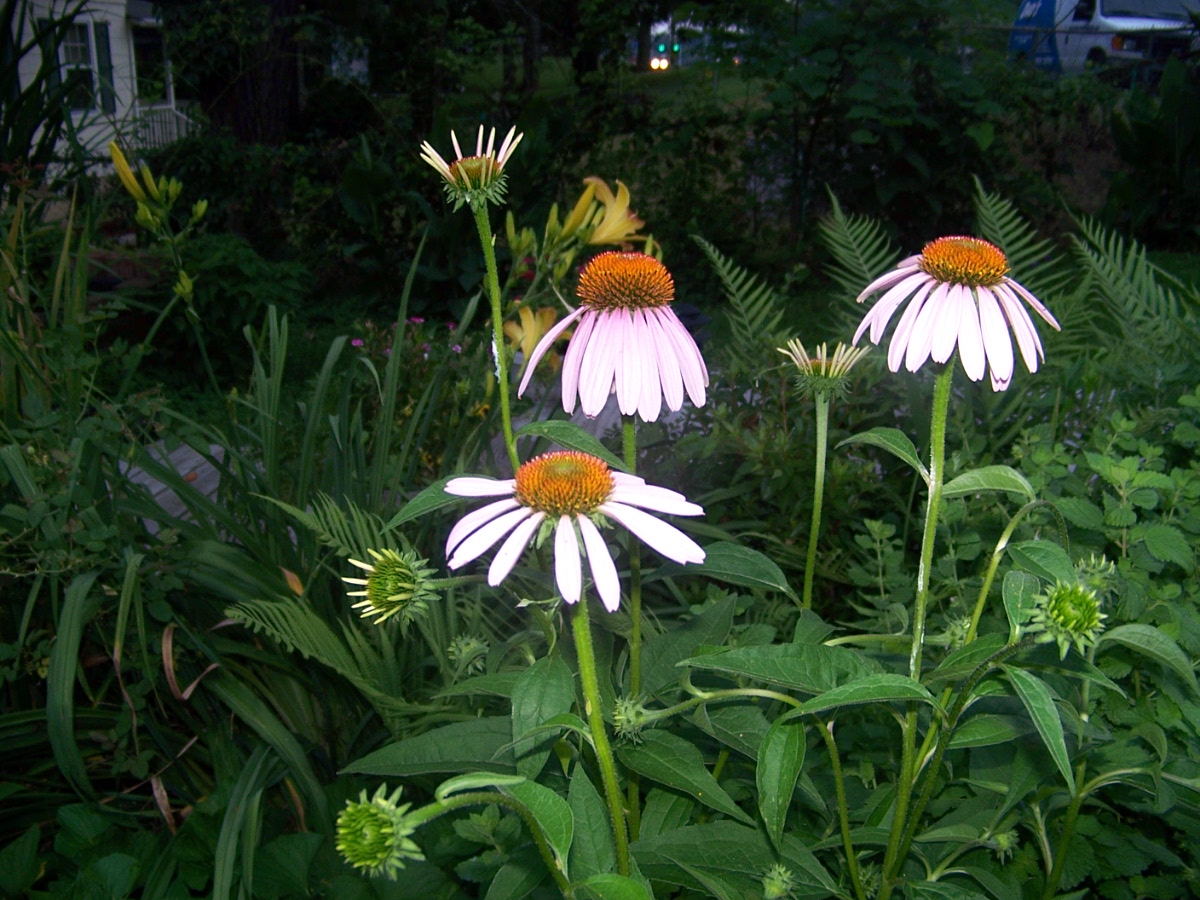|
Gardens Ablaze |
||
|
|
Echinacea |
|
|
Additional Echnacea Information
Medicinal Uses Site Map
Home |
Echinacea has no usefulness in the kitchen. Depending on the type, the beneficial part of the plant can be found in the rhizome, or root, or in the leaves and flowers. All types have been proven to contain properties that appear to facilitate wound healing and help eliminate immune system problems. The three types normally used for medicinal purposes include Purpurea, Pallida, and Augustifolia, and many prepared products contain a combination of all three. Purpurea has the largest flowers and is the one most of us can identify with. Augustifolia also has purple flowers, but they are somewhat smaller and sparse, and the leaves are more narrow. Pallida resembles Augustifolia, but is a little taller and has light purple flowers. See Medicinal Uses of Echinacea below for more information on the health benefits of using this herb. In the garden, Echinacea is an absolute delight. It is a hardy perennial plant that will survive all but the coldest climates, is not very particular about soil conditions, withstands drought admirably, and provides big, strong stems and lovely purple flowers that make excellent cut flowers that last a week or more. It appreciates a little balanced fertilizer or a compost side-dressing in spring or fall, but otherwise needs little care. Echinacea is easy to start from seed, but does better when the ground has thoroughly warmed. If harvesting the root for medicinal use, wait until the plant has been through several hard frosts and has died back. The root can be cleaned and dried at this point, and the crown can be replanted for flowers next year, but the future roots will not be as potent, so bear this in mind if this is solely a medicinal crop in your garden. Echinacea prefers full sun but will also do well in a south-facing position with late afternoon shade. It withstands humidity well, making it a good back of the border plant choice for the more humid regions where other plants might suffer. It attracts bees and butterflies, and therefore makes a good choice for a Habitat type of gardening situation.
Custom Search
|
|
|
Gardens Ablaze |
||
 Echinacea
(Purple Coneflower, Coneflower, or Snakeroot) is one of the more well-known
herbs of our time. American Indians discovered the beneficial uses
of this plant when they chewed on the rhizomes and noticed a tingling sensation.
Consequently, and not surprisingly, it was used widely by all the Indians
as a remedy for burns, insect bites, and snake bites. It was also
used as a numbing agent for hands, feet, and throats, lessening the pain
of walking on, handling, or swallowing hot coals. Now we know!
Echinacea
(Purple Coneflower, Coneflower, or Snakeroot) is one of the more well-known
herbs of our time. American Indians discovered the beneficial uses
of this plant when they chewed on the rhizomes and noticed a tingling sensation.
Consequently, and not surprisingly, it was used widely by all the Indians
as a remedy for burns, insect bites, and snake bites. It was also
used as a numbing agent for hands, feet, and throats, lessening the pain
of walking on, handling, or swallowing hot coals. Now we know!